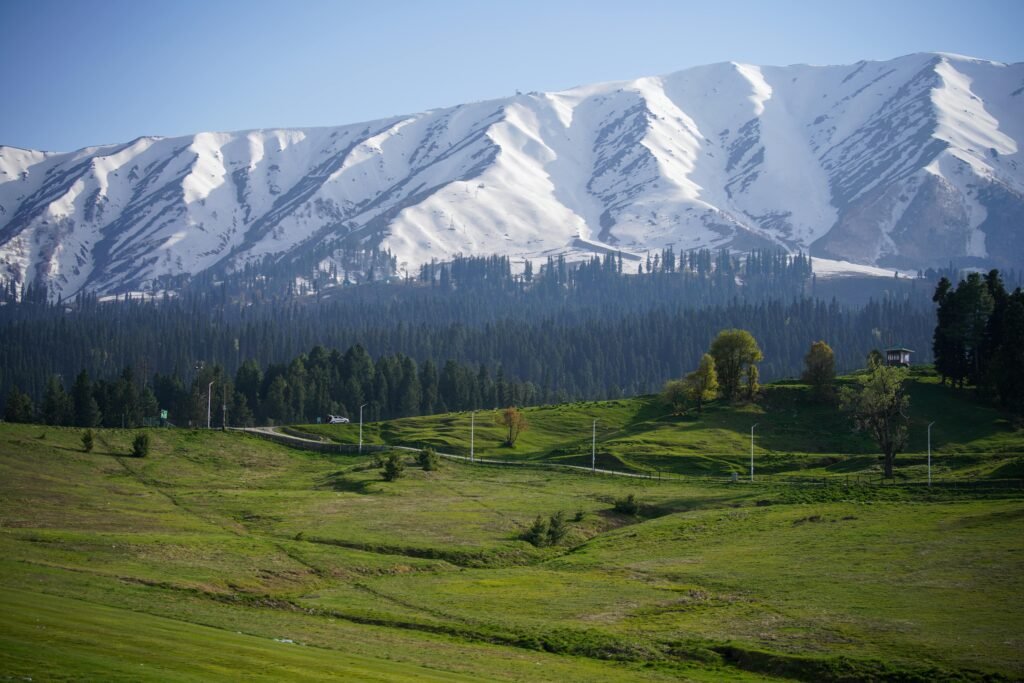Kashmir, often referred to as “Paradise on Earth,” is a region located in the northern part of the Indian subcontinent. Known for its breathtaking natural beauty, Kashmir is characterized by snow-capped mountains, lush valleys, pristine lakes, and sprawling meadows. The region is divided among India, Pakistan, and China, with the Indian-administered territory of Jammu and Kashmir being the most well-known and politically sensitive part of the region.
The landscape of Kashmir is dominated by the majestic Himalayan mountain range, which includes the famous Pir Panjal and the Zanskar ranges. The Jhelum River, which flows through the region, adds to the area’s scenic appeal, with its meandering waters and surrounding gardens and orchards. The Dal Lake in Srinagar, with its traditional houseboats and shikaras (wooden boats), is one of the most iconic images associated with the region.
Kashmir has a rich cultural heritage, blending influences from Central Asia, Persia, and the Indian subcontinent. The Kashmiri people, known for their hospitality, speak Kashmiri, although Urdu, Hindi, and English are also widely spoken. The region’s art and crafts, particularly Pashmina shawls, carpets, and papier-mâché items, are renowned worldwide for their intricate designs and fine craftsmanship.
Historically, Kashmir has been a center of learning and spirituality, with a long tradition of Sufism, Hinduism, and Buddhism. The region was home to numerous temples, shrines, and monasteries, many of which are still revered today. Srinagar, the summer capital of Jammu and Kashmir, has the famous Hazratbal Shrine and Shankaracharya Temple, both important pilgrimage sites.
Kashmir’s history has been marked by conflict, especially in the post-independence period. The territorial dispute between India, Pakistan, and China over the region has led to ongoing political instability, with a long-standing military presence and tensions between various groups. Despite these challenges, the resilience of the Kashmiri people and the region’s deep cultural and natural beauty continue to capture the imagination of the world.
In terms of economy, agriculture plays a key role, with saffron, apples, and walnuts being some of the region’s notable exports. Tourism, though significantly impacted by conflict, still remains a vital part of the economy, attracting visitors seeking its natural beauty, adventure sports, and cultural heritage.
Kashmir, with its serene landscapes and complex political reality, remains one of the most fascinating and enigmatic regions in the world.









